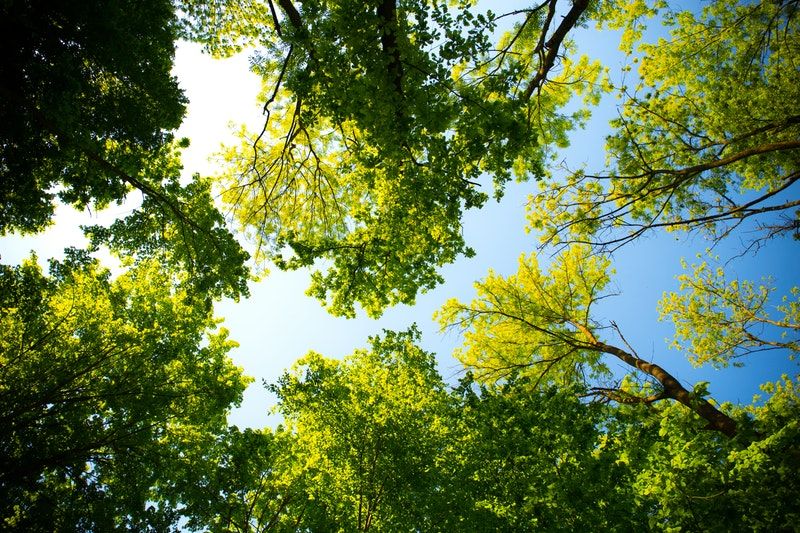Forest cover is decreasing and a recent South Nation Conservation (SNC) report called, “Protecting and Increasing Forest Cover in the South Nation Conservation Jurisdiction” makes several recommendations for education and promotion, basing this need on forest cover information dating back to aerial surveys taken in 2014.
The South Nation Conservation initiative involved the creation of an Agricultural Forest Cover Committee (AFCC) in January 2017 with 22 members. This group met six times between January and April of 2017. Then a broader multi-stakeholder Forest Conservation Working Group was formed to continue the work of the AFCC. The Working Group’s mandate was to provide recommendations to the SNC’s board of directors and 16 member municipalities.
By March 31, 2019, municipalities must adopt policies to protect, enhance tree canopy
One of the things that is interesting about the August 2018 report, which uses aerial analysis of forest cover from 2008 and 2014, is a reminder that as of March 31, 2019, municipalities must adopt and maintain policies detailing the manner in which the municipality will protect and enhance the tree canopy and natural vegetation in the municipality. The report notes that not all municipalities will choose to regulate tree cover through a tree cutting/tree conservation bylaw.
But Ronda Boutz, the SNC Team Lead for Special Projects, says that there has not been a lot of communication from the province about this.
“It doesn’t say how to go about it,” said Boutz, who added that municipalities will be resorting to their own interpretation when it comes to adopting policies.
The SNC report says that municipalities are encouraged to consider initiatives such as woodlot advisory services, tree plantings, municipal forests, forest management plans and natural heritage strategies.
Let’s take a look at forest cover in Eastern Ontario by municipality, remembering that 30 per cent tree cover is Environment and Climate Change Canada’s minimum recommended level. In the 16-municipality area encompassed by the South Nation Conservation, 13,148 acres of forests were lost between 2008 and 2014. No aerial analysis of forest cover has taken place since 2014.
Here is a list of a few local municipalities, along with the total forest cover indicated as a percentage. The City of Ottawa is included for comparison purposes. Overall, Prescott-Russell has a forest cover of 24.8 per cent. Locally, Champlain has a forest cover of 24.1 per cent, less than the City of Ottawa’s 26.2 per cent.
Alfred-Plantagenet, 25.5
Casselman 3.4
Champlain, 24.1
Clarence-Rockland, 37.6
The Nation, 25.4
North Glengarry, 33.6
Ottawa, 26.2
Russell, 12.7.
The City of Ottawa has passed a site alteration by-law to replace its drainage by-law. This is the first of its kind in the SNC jurisdiction and provides a more comprehensive approach to protecting ecological function, as it covers activities such as removal of topsoil, placement of fill, alteration of grades and excavation — including clearing or stripping of vegetation. The SNC is considering a review of this bylaw to determine if it might be a feasible option for municipalities to consider for the protection of sensitive features (example: provincial significant wetlands, local significant wetlands and woodland and riparian areas).
The SNC is also recommending that municipalities consider tree conservation bylaws and wants to work with the province and municipalities to develop a process for disposing of public land which would consider first right of refusal to a municipality or local land trust (including Conservation Authorities).
Agricultural producers pay no tax on 20 acres of forest land;
SNC encouraging municipalities to consider zero tax rate for forested land
The SNC also wants to promote available tax incentives for maintaining or adding forested properties, including the Municipal Property Assessment Corporation’s (MPAC’s) tax-free option for 20 acres of forested land for agricultural producers. In fact, the SNC will encourage municipalities to consider a zero per cent tax rate on forested land.
The SNC includes a long list of recommendations which are part of its education and promotion suggestions, including the development of an information package targeting new politicians to reinforce the value of forest conservation initiatives and the need for appropriate funding to support local protection initiatives.
Included in the recommendations are increased public awareness of the ecological benefits of forests, development of a consolidated webpage, new forestry education programs and more public outreach and education which uses the strengths of Indigenous knowledge.
Several of these recommendations, including some of the SNC best management practices, were slated to be initiated in the fall of 2018 by the SNC using what was remaining of 2017 Forest Conservation Special Levy Funding in the amount of $100,000.
Implementation includes the following:
A tree planting subsidy for “over the counter” seedlings for riparian buffer and windbreak plantings
Survival assessments and woodlot visits to previous tree planting sites on private land
Evaluation of SNC’s existing buffer demonstration sites to assess potential for use in promotional materials
Signage/display for municipal offices to house resources for landowners on forest stewardship programs
Bilingual community campaign, using billboard signage, to promote forest conservation and tree planting
Community “free tree” days, partnering with municipalities to offer seedlings to landowners to encourage tree planting.
The report includes dozens of suggested actions as part of its recommendations.
Decreases in forest cover results in decreases in water quality and quantity, increases flooding, droughts and erosion. Forests also sequester carbon, release oxygen and provide critical habitat for fish and wildlife.
Many of the suggestions in the report focus on ways to keep or add trees along watercourses and agricultural fields and to provide environmental, economic and financial incentives to help manage and create forests, especially in ecologically-sensitive areas not suitable for farming.
The full report can be found at: www.nation.on.ca/forest-cover.


